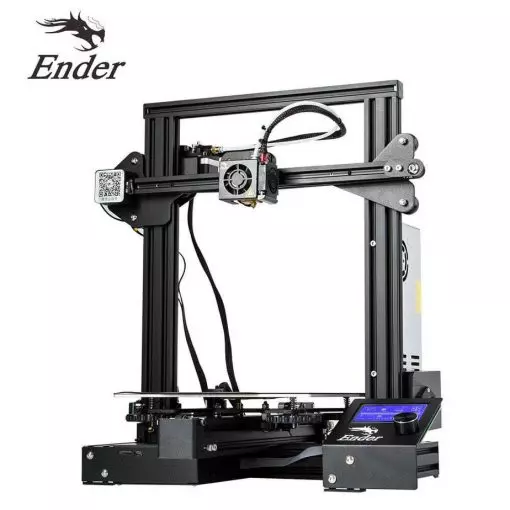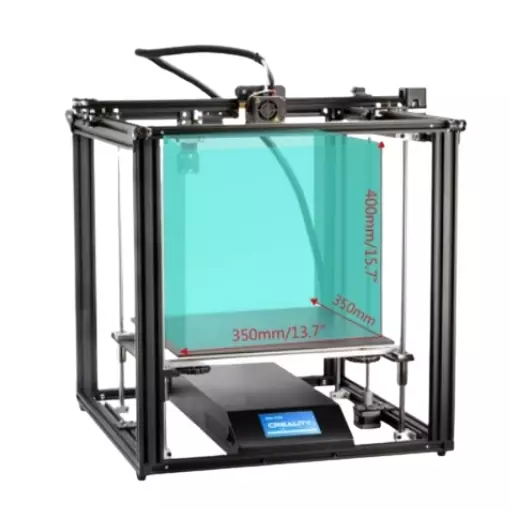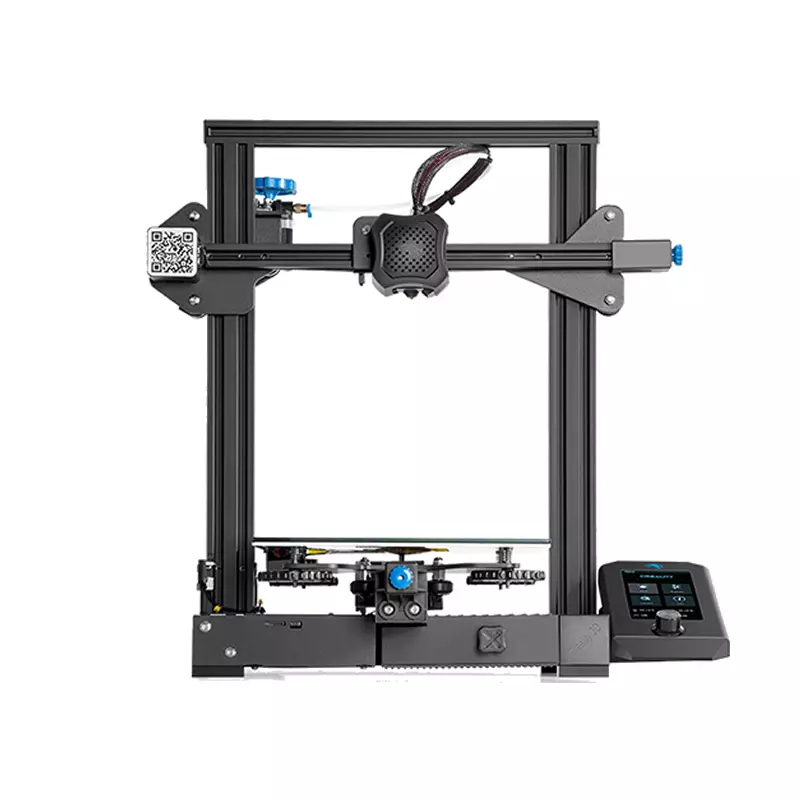Compare Ender 3 vs Ender 5 Plus vs Ender 3 V2
Comparison between the best 3D printers
Choose the best 3D printer at the best price. The cheapest 3D printers are here.
Buy a 3D printer here with 3D Fila.
 |
 |
 |
|
| Model | Ender 3[BUY Ender 3] |
Ender 5 Plus[BUY Ender 5 Plus] |
Ender 3 V2[BUY Ender 3 V2] |
| Printing Material | Filament | Filament | Filament |
| Estimated price | $210,00 | $599,00 | $289,00 |
| Fabricante | Creality 3D | Creality 3D | Creality 3D |
| Release Year | 2018 | 2019 | 2022 |
| Print Volume [mm] | 220x220x250 | 350x350x400 | 220x220x250 |
| Printer Size [mm] | 440x440x465 | 632x619x666 | 470x475x620 |
| Weight [kg] | 6,62 | 18,2 | 7,8 |
| Power Loss Recovery | NO | YES | YES |
| Enclosed printer | NO | NO | NO |
| Bed Leveling | Manual | Automatic | Manual |
| Filament End Sensor | NO | YES | NO |
| Bed type | Heated | Heated | Heated |
| Power supply system | Bowden | Bowden | Bowden |
| Standard nozzle | 0,4 | 0,4 | 0,4 |
| Maximum Nozzle Temperature [°C] | 255 | 260 | 255 |
| Maximum Bed Temperature [°C] | 110 | 100 | 100 |
| Maximum printing speed [mm/s] | 180 | 180 | 180 |
| Filament holder | YES | YES | YES |
| Camera for supervision | NO | NO | NO |
| Recommended filaments | PLA, TPU, ABS, PETG | PLA, TPU, ABS, PETG | PLA, TPU, ABS, PETG |
| Recommended slicers | Cura, Simplify, Slic3r | Cura, Simplify, Slic3r | Cura, Simplify, Slic3r |
| Maximum Resolution [mm] | 0,1 | 0,1 | 0,1 |
| Processor | 8 bits | 32 bits | 32 bits |
| Display | Mono | Touchscreen TFT 4,3'' | Touchscreen TFT 4,3'' |
| Power Supply | 24V / 270W | 24V / 504W | 24V / 360W |
| Connectivity | SD / USB | SD / USB | SD / USB |
| Operating systems | Windows, Mac, Linux | Windows, Mac, Linux | Windows, Mac, Linux |
| Date of registration in the system | 2021-04-13 | 2021-04-14 | 2021-04-15 |
| Release date | 2018 | 2019 | 2022 |
| Extra features | The Ender 3 V1 is a DIY assembly 3D printer, a sales leader since 2017, standing out for its cost-benefit. With a wide printing capacity, it has a CNC machined structure for precision and stability. It offers high-precision prints with low noise, thanks to its innovative V-profile and pulleys. It has a self-adhesive magnetic platform for easy removal of models and excellent adhesion. The Ender 3 heats up quickly, reaching 100°C in 5 minutes, ideal for agile prints. It includes protection against power failures, allowing you to resume printing after interruptions, saving time and material. | The Ender 5 Plus offers a large print volume (350x350x400 mm) and fast assembly. It includes a BLTouch sensor, but with range limitations. It stands out for its dimensional accuracy, although it requires adjustments to the slicer settings. Despite the noise, its integrated design saves space, and includes features such as a filament sensor and power resumption. Ideal for large projects, it requires refinement in the settings for high-quality prints. | The Creality Ender-3 V2, with a design inspired by the Prusa i3 series, stands out for its DIY assembly structure. With an area of ??250x250x250mm, it supports a variety of projects. It has a micro-USB port, microSD slot and integrated tool drawer. The tension adjustment adapts to different regions. Its manual print bed leveling process requires attention, but offers an enriching experience. Ideal for 3D printing enthusiasts willing to invest time in assembly and adjustment. |
| Support for multiple colors and materials (AMS and CFS) | NO | NO | NO |
Notes * |
|||
| Cost-benefit | 6 / 10 | 6 / 10 | 7 / 10 |
| Hardware | 0.5 / 10 | 2 / 10 | 2.1 / 10 |
| Screen | . | . | . |
| Print volume | 3 / 10 | 4 / 10 | 3 / 10 |
| Performance | 1 / 10 | 1 / 10 | 1 / 10 |
| [BUY Ender 3] | [BUY Ender 5 Plus] | [BUY Ender 3 V2] |
Conclusion |
| In comparing the three Creality 3D printers—the Ender 3, Ender 5 Plus, and Ender 3 V2—it is evident that each model caters to different user needs and preferences, particularly in terms of features and pricing. The Ender 3 represents an excellent entry-level option, particularly for those seeking affordability without sacrificing print quality. Its compact print volume and straightforward manual bed leveling make it ideal for beginners and hobbyists. However, its lack of advanced features, such as power loss recovery and a filament sensor, may limit its appeal for more serious users. On the other hand, the Ender 5 Plus emerges as a powerful choice for larger projects. Its substantial print volume and automatic bed leveling provide novices and experienced users alike with the capability to execute intricate designs. Nevertheless, its higher price point can be a deterrent for those not requiring such expansive capabilities. Users should also keep in mind the need for slicer adjustments to achieve the best performance. The Ender 3 V2 strikes a balance between cost and functionality, presenting enhanced features over the Ender 3 while remaining budget-friendly. Its updated design and improved stability cater well to both novice and intermediate users who are willing to invest time in manual adjustments. However, like the Ender 3, it does not offer some of the advanced features found in the Ender 5 Plus. In conclusion, the best choice depends on individual needs: the Ender 3 is ideal for budget-conscious beginners; the Ender 3 V2 provides a bit more flexibility and capability for a reasonable price; and the Ender 5 Plus, while pricier, is suited for users with larger-scale projects and a willingness to navigate more advanced settings. Each printer has its strengths and weaknesses, ultimately pointing users toward selecting the model that best aligns with their printing ambitions and budgetary constraints. |

